Started in 2006 by Hayden and Chris Paddon, Paddon Rallysport has now grown to be one of New Zealand's most successful rally teams. Since 2014 a close association with Hyundai NZ has built to now lay the foundations for the Hyundai New Zealand Rally Team, run and managed by Paddon Rallysport.
Long term the vision is for Paddon Rallysport to develop new technology in the world of Motorsport and take a 100% Kiwi team around the world to win!
Paddon Rallysport also specialise in Brake Pads, thanks to a close working relationship with Winmax Brakes in Japan. Dating back to 2013, Hayden has been working closely in the testing and development of brake pads and the team at Paddon Rallysport have a thorough knowledge of brake pads for anything from club racing/rallying right up to WRC and endurance race level. Competitively priced means customers get a premium product at a fraction of the cost.
Paddon Rallysport new 500sqm workshop and HQ based at Highlands Motorsport Park, Cromwell, New Zealand, is a spectacular backdrop for a motorsport team, with the international spec 4.3km race track on the back door step.
Key achievements of Paddon Rallysport
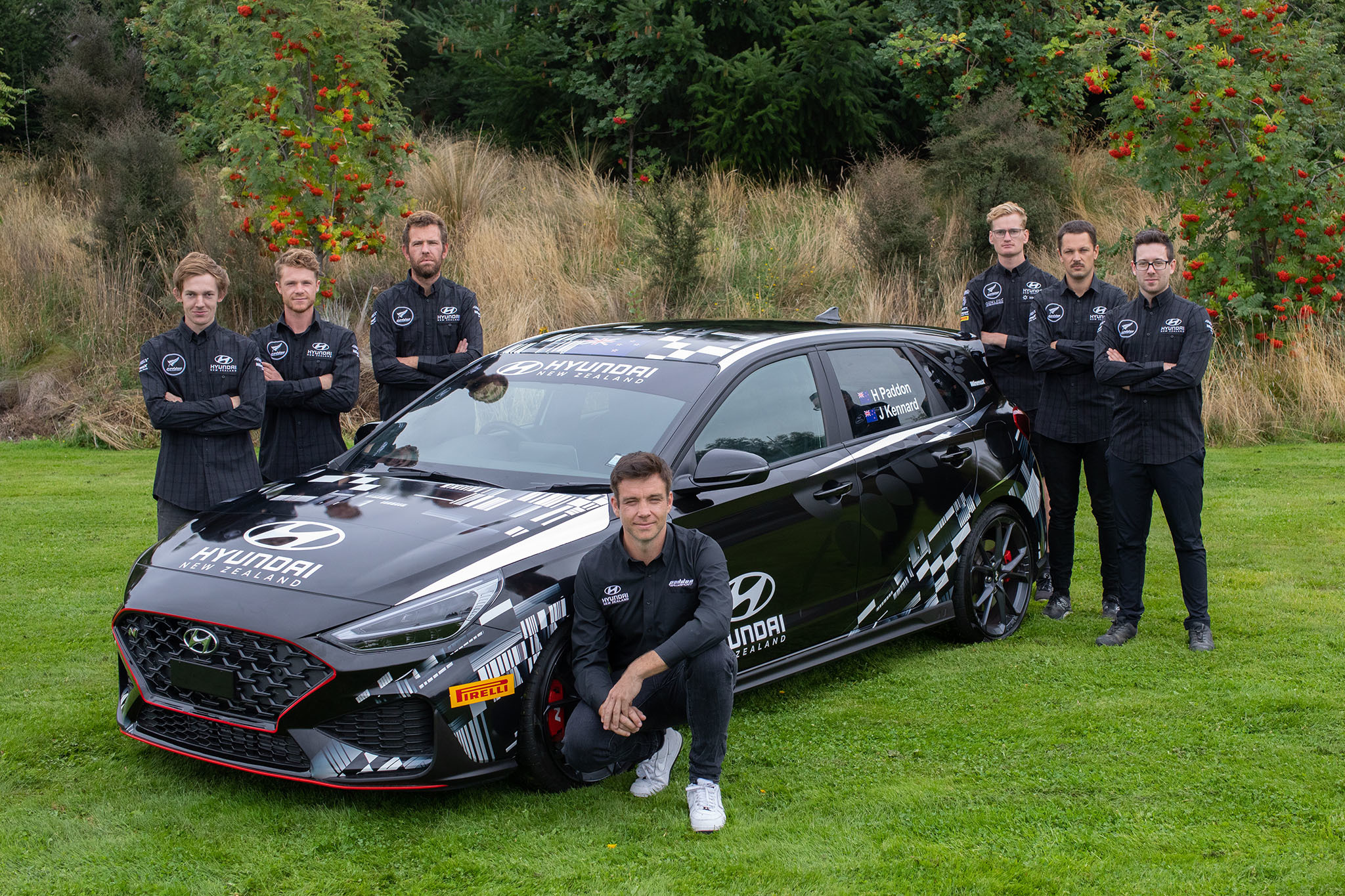
Being a rally or race driver does not necessary mean big budgets and the fastest cars. It means having fun, enjoying the driving from club level all the way to national, and there be a measurable progression forward through different classes and levels. Find out all you need to know below.
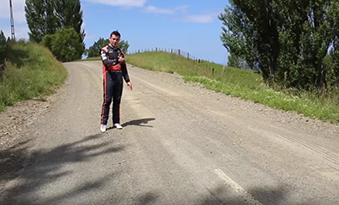
EPISODE 12 NEW**
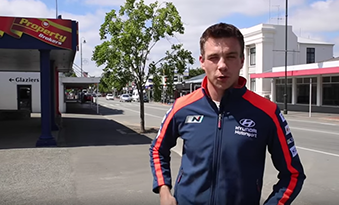
EPISODE 11 NEW**
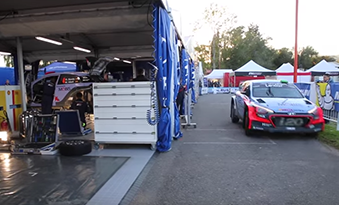
EPISODE 10 NEW**
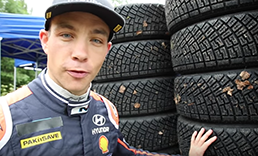
EPISODE 9 NEW**
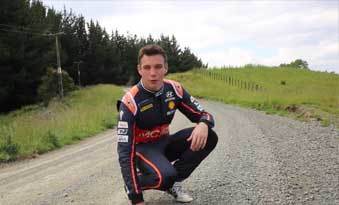
EPISODE 8 NEW**
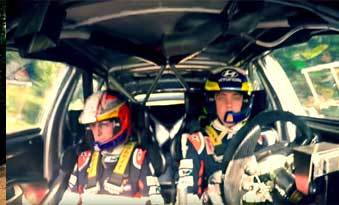
EPISODE 7
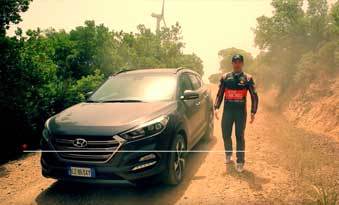
EPISODE 6
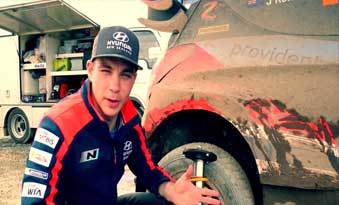
EPISODE 5
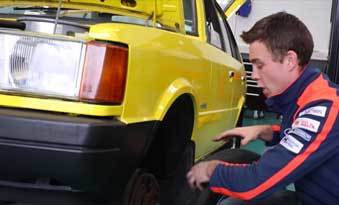
Episode 4
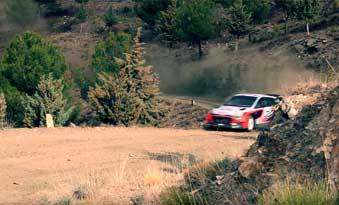
Episode 3
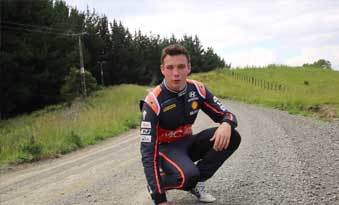
EPISODE 2

EPISODE 1
Being a rally or race driver does not necessary mean big budgets and the fastest cars. It means having fun, enjoying the driving from club level all the way to national, and there be a measurable progression forward through different classes and levels. First of all there are two key components before you can drive in your first event
Driver requirements
Driver equipment
These events you can use a normal road car or a competition car for:
Motorkhana
Motorkhana is a cheap and enjoyable form of motorsport where you can use any vehicle and it is primarily a test of driver skill. Events are normally held on smooth grass or tarseal with the driver having to negotiate a set course at low speed. Penalties apply for going the wrong way, hitting markers, etc.
Autocross
Autocross is the ideal environment in which to learn or improve car control skills. A circuit is usually laid out (using hay bales or plastic cones) on a large grass, tarseal or gravel area and competitors compete individually at speed against the clock.
Sprints (Basic)
Sprints are a relatively inexpensive form of motorsport and yet very competitive. Sprints are a test of the vehicle’s performance and the driver’s ability to control the vehicle. Competitors must be a member of a Member Club or Associate Member Club.
Standing Sprint (Single Car) – held on either country roads or on a permanent drag strip.
Circuit Sprint (Single Car) – this is a good event if you would like an introduction to what racing can be like.
For the below events you would need a club level or full competition car
Hillclimb
Hillclimbs are generally the highest form of motorsport that can be competed in using a normal road car. The finish line must be at a higher altitude than the start line, and the course must be mostly uphill, on a private or public road, with either a gravel or tarseal surface. Hillclimbs are generally classed as high speed events, where competitors compete individually against the clock.
Rally Sprint
Rally sprints are for vehicles prepared for rallies. They are held on closed road venues with the course being limited to a maximum of 10km. The course, and the way it is organised, is the same as for a rally special stage and gives the competitors the opportunity to both practice the skills and acquire the knowledge required for rallying. The winner of a rally sprint is the competitor who takes the least amount of time to complete the course. Your vehicle must comply with Motorsport Schedule R, and a co-driver is required, who must also adhere to the Club Sport requirements.
Sprints
Sprints are a relatively inexpensive form of motorsport and yet very competitive. All sprints are a test of the vehicle’s performance and the driver’s ability to control the vehicle. The winner is the competitor with the fastest time and speed over a measured distance.
Bent Sprint (Single Car) – Run on a road course (gravel or sealed) which has at least one bend or curve.
Circuit Sprint (Dual Car) – Run on a sealed circuit. Paired cars may be started at intervals of 5 seconds or more and this is a good introduction to racing, but with less risk then a race meeting.
Circuit Sprint (Multi Car) – Run on a sealed circuit. This is your best introduction to a “real” race situation. You and five other cars compete in a short race with a grid start.
All this leads to the 2 ultimate types events for motorsport in New Zealand, rallying and/or circuit racing. You would need to do some of the above events first to learn the basics of how events run and driving your car, before starting your first rally or race meeting.
Funding your passionMoney/Sponsorship
This is a key element, however motorsport does not need to be expensive, particularly at club level. Your biggest expenses will be starting up and this will depend on how much you want to intially invest. As a rough estimation, if you are starting with nothing (not including the car) approx. costs could be:
If you are using your road car, or a starter club car, that you already have, then you may use 1 set of tyres every 3-4 events, and maybe use 10-20 liters of fuel per event. Entry fees can be as little as $20 for paddock type events. Within car clubs they will have championships that you can compete in, which would include a series of smaller club events. You could do a full 6-8 event club championship for as little as $500, if you don’t break your car. If you break your car, you may be walking to work on Monday
Of course sponsorship is one way to fund your hobby and the best place to start with all this is to set yourself up and be ready to compete. This way people will see you are serious and have dedicated time to your hobby. Secondly, I would start by talking with people you know who may know someone else (2 degrees of separation in NZ). To get a company to invest in you, you need to show them value for money. When I started racing, I approached local businesses in my home town of Geraldine and sold my story and dream. We got 13 businesses on board at $100 each (which to them was not a lot) which funded a whole season for me in the Mini. While at club level it is debatable how much value you can offer companies, it is also about creating the feel good factor and making the given company proud of being involved with you. This can be generated by ride days, invitations to join you at events and really let them share the experience with you.
I would, at minimum, put together a 1 page proposal, outlining who you are, your season’s goals, what you will do for them (name on car, displays, hand out promotional items) and costs. But with costs, make sure you give them options. Sponsorship is about providing something that suits that particular person, or company and this is different for everyone, which is why you need options. This is very basic, but if you can get a foot in the door and build a relationship, then it could lead to bigger things as you progress forward in the sport.
Now you are ready to go have fun and go sideways. Remember to always stay safe, and there will always be plenty of people within your car club that will help. There will also be a social side to the club, where you will be able to socialize and create lifetime friends. Enjoy!
So you want to be involved in the car, but don’t think you have the knack of driving. Well then co-driving could be for you. In fact, before I drove I co-drove my father for several years and the adrenalin rush and pure excitement was second to none. Like drivers, you can co-drive from the age of 12.
Starting out co-driving
Motorsport is a team sport, and the team personnel and mechanics for each team play a pivotal role. Being involved with a team is a great way to be involved in motorsport and to feel a part of the action. This would be one of the easiest ways to get involved in motorsport. Although you do not have to be a member of a car club, or have a motorsport license, I would still recommend joining a car club, so that you can stay up to date with events and meet people in the right circles.
How to get involved with a team?
Volunteers are the heart of our sport and go massively under the radar. Without the thousands of volunteers in NZ, there would be no motorsport and all drivers/teams are fully aware and appreciative of how much volunteers are needed to enable our sport to continue. There are many different volunteer positions involved in motorsport, from admin, marshals, safety, recovery, timing, running of events, setting up events etc., and there is no such thing as too many volunteers, so you are promised that there will always be opportunities. What better way to have a sense of accomplishment than to be a part of a successful motorsport event, witnessing people enjoying themselves and being up close and personal with the action.
How can you get involved?
The above are some of the main aspects of how you could get involved in motorsport and are solely based on our opinions/knowledge. Official, up-to-date information should be sort and can be found at any of the following links.
Motorsport NZ (Governing body) – www.motorsport.org.nz
List of NZ Motorsport clubs – www.motorsport.org.nz/about/clubs
Motorsport NZ license application forms – www.motorsport.org.nz
Motorsport NZ authority card application form – http://www.motorsport.org.nz/sites/default/files/motorsport/forms/T007%20Authority%20Card%20Application_1.pdf
Motorsport NZ logbook application form – http://www.motorsport.org.nz/sites/default/files/motorsport/forms/T001%20Vehicle%20Logbook%20Application_1.pdf
South Canterbury Car Club (Hayden’s club) – http://www.southcanterburycarclub.org.nz
Ashburton Car Club (the club Hayden started in) – http://www.ashburtoncarclub.org.nz/cms/index.php
Chicane Racewear (Race equipment, Auckland) – www.chicane.co.nz
Racetech (Race equipment, Wellington) – www.racetech.co.nz
Palmside (Race equipment, Christchurch) – www.palmside.co.nz
Purchase competition car – www.trademe.co.nz
International car purchases – www.rallycarsforsale.net
EPISODE 12 NEW**
EPISODE 11 NEW**
EPISODE 10 NEW**
EPISODE 9 NEW**
EPISODE 8 NEW**
EPISODE 7
EPISODE 6
EPISODE 5
Episode 4
Episode 3
EPISODE 2
EPISODE 1
Being a rally or race driver does not necessary mean big budgets and the fastest cars. It means having fun, enjoying the driving from club level all the way to national, and there be a measurable progression forward through different classes and levels. First of all there are two key components before you can drive in your first event
Driver requirements
Driver equipment
These events you can use a normal road car or a competition car for:
Motorkhana
Motorkhana is a cheap and enjoyable form of motorsport where you can use any vehicle and it is primarily a test of driver skill. Events are normally held on smooth grass or tarseal with the driver having to negotiate a set course at low speed. Penalties apply for going the wrong way, hitting markers, etc.
Autocross
Autocross is the ideal environment in which to learn or improve car control skills. A circuit is usually laid out (using hay bales or plastic cones) on a large grass, tarseal or gravel area and competitors compete individually at speed against the clock.
Sprints (Basic)
Sprints are a relatively inexpensive form of motorsport and yet very competitive. Sprints are a test of the vehicle’s performance and the driver’s ability to control the vehicle. Competitors must be a member of a Member Club or Associate Member Club.
Standing Sprint (Single Car) – held on either country roads or on a permanent drag strip.
Circuit Sprint (Single Car) – this is a good event if you would like an introduction to what racing can be like.
For the below events you would need a club level or full competition car
Hillclimb
Hillclimbs are generally the highest form of motorsport that can be competed in using a normal road car. The finish line must be at a higher altitude than the start line, and the course must be mostly uphill, on a private or public road, with either a gravel or tarseal surface. Hillclimbs are generally classed as high speed events, where competitors compete individually against the clock.
Rally Sprint
Rally sprints are for vehicles prepared for rallies. They are held on closed road venues with the course being limited to a maximum of 10km. The course, and the way it is organised, is the same as for a rally special stage and gives the competitors the opportunity to both practice the skills and acquire the knowledge required for rallying. The winner of a rally sprint is the competitor who takes the least amount of time to complete the course. Your vehicle must comply with Motorsport Schedule R, and a co-driver is required, who must also adhere to the Club Sport requirements.
Sprints
Sprints are a relatively inexpensive form of motorsport and yet very competitive. All sprints are a test of the vehicle’s performance and the driver’s ability to control the vehicle. The winner is the competitor with the fastest time and speed over a measured distance.
Bent Sprint (Single Car) – Run on a road course (gravel or sealed) which has at least one bend or curve.
Circuit Sprint (Dual Car) – Run on a sealed circuit. Paired cars may be started at intervals of 5 seconds or more and this is a good introduction to racing, but with less risk then a race meeting.
Circuit Sprint (Multi Car) – Run on a sealed circuit. This is your best introduction to a “real” race situation. You and five other cars compete in a short race with a grid start.
All this leads to the 2 ultimate types events for motorsport in New Zealand, rallying and/or circuit racing. You would need to do some of the above events first to learn the basics of how events run and driving your car, before starting your first rally or race meeting.
Funding your passionMoney/Sponsorship
This is a key element, however motorsport does not need to be expensive, particularly at club level. Your biggest expenses will be starting up and this will depend on how much you want to intially invest. As a rough estimation, if you are starting with nothing (not including the car) approx. costs could be:
If you are using your road car, or a starter club car, that you already have, then you may use 1 set of tyres every 3-4 events, and maybe use 10-20 liters of fuel per event. Entry fees can be as little as $20 for paddock type events. Within car clubs they will have championships that you can compete in, which would include a series of smaller club events. You could do a full 6-8 event club championship for as little as $500, if you don’t break your car. If you break your car, you may be walking to work on Monday
Of course sponsorship is one way to fund your hobby and the best place to start with all this is to set yourself up and be ready to compete. This way people will see you are serious and have dedicated time to your hobby. Secondly, I would start by talking with people you know who may know someone else (2 degrees of separation in NZ). To get a company to invest in you, you need to show them value for money. When I started racing, I approached local businesses in my home town of Geraldine and sold my story and dream. We got 13 businesses on board at $100 each (which to them was not a lot) which funded a whole season for me in the Mini. While at club level it is debatable how much value you can offer companies, it is also about creating the feel good factor and making the given company proud of being involved with you. This can be generated by ride days, invitations to join you at events and really let them share the experience with you.
I would, at minimum, put together a 1 page proposal, outlining who you are, your season’s goals, what you will do for them (name on car, displays, hand out promotional items) and costs. But with costs, make sure you give them options. Sponsorship is about providing something that suits that particular person, or company and this is different for everyone, which is why you need options. This is very basic, but if you can get a foot in the door and build a relationship, then it could lead to bigger things as you progress forward in the sport.
Now you are ready to go have fun and go sideways. Remember to always stay safe, and there will always be plenty of people within your car club that will help. There will also be a social side to the club, where you will be able to socialize and create lifetime friends. Enjoy!
So you want to be involved in the car, but don’t think you have the knack of driving. Well then co-driving could be for you. In fact, before I drove I co-drove my father for several years and the adrenalin rush and pure excitement was second to none. Like drivers, you can co-drive from the age of 12.
Starting out co-driving
Motorsport is a team sport, and the team personnel and mechanics for each team play a pivotal role. Being involved with a team is a great way to be involved in motorsport and to feel a part of the action. This would be one of the easiest ways to get involved in motorsport. Although you do not have to be a member of a car club, or have a motorsport license, I would still recommend joining a car club, so that you can stay up to date with events and meet people in the right circles.
How to get involved with a team?
Volunteers are the heart of our sport and go massively under the radar. Without the thousands of volunteers in NZ, there would be no motorsport and all drivers/teams are fully aware and appreciative of how much volunteers are needed to enable our sport to continue. There are many different volunteer positions involved in motorsport, from admin, marshals, safety, recovery, timing, running of events, setting up events etc., and there is no such thing as too many volunteers, so you are promised that there will always be opportunities. What better way to have a sense of accomplishment than to be a part of a successful motorsport event, witnessing people enjoying themselves and being up close and personal with the action.
How can you get involved?
The above are some of the main aspects of how you could get involved in motorsport and are solely based on our opinions/knowledge. Official, up-to-date information should be sort and can be found at any of the following links.
Motorsport NZ (Governing body) – www.motorsport.org.nz
List of NZ Motorsport clubs – www.motorsport.org.nz/about/clubs
Motorsport NZ license application forms – www.motorsport.org.nz
Motorsport NZ authority card application form – http://www.motorsport.org.nz/sites/default/files/motorsport/forms/T007%20Authority%20Card%20Application_1.pdf
Motorsport NZ logbook application form – http://www.motorsport.org.nz/sites/default/files/motorsport/forms/T001%20Vehicle%20Logbook%20Application_1.pdf
South Canterbury Car Club (Hayden’s club) – http://www.southcanterburycarclub.org.nz
Ashburton Car Club (the club Hayden started in) – http://www.ashburtoncarclub.org.nz/cms/index.php
Chicane Racewear (Race equipment, Auckland) – www.chicane.co.nz
Racetech (Race equipment, Wellington) – www.racetech.co.nz
Palmside (Race equipment, Christchurch) – www.palmside.co.nz
Purchase competition car – www.trademe.co.nz
International car purchases – www.rallycarsforsale.net